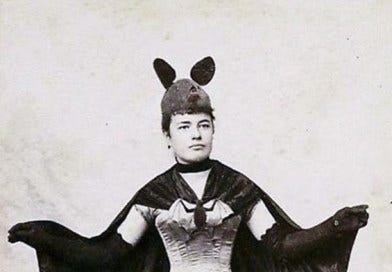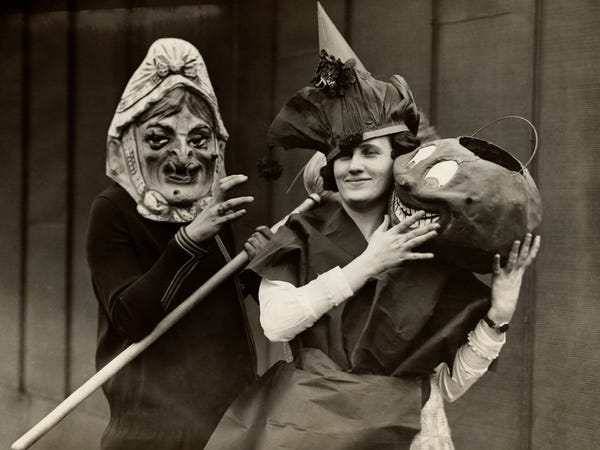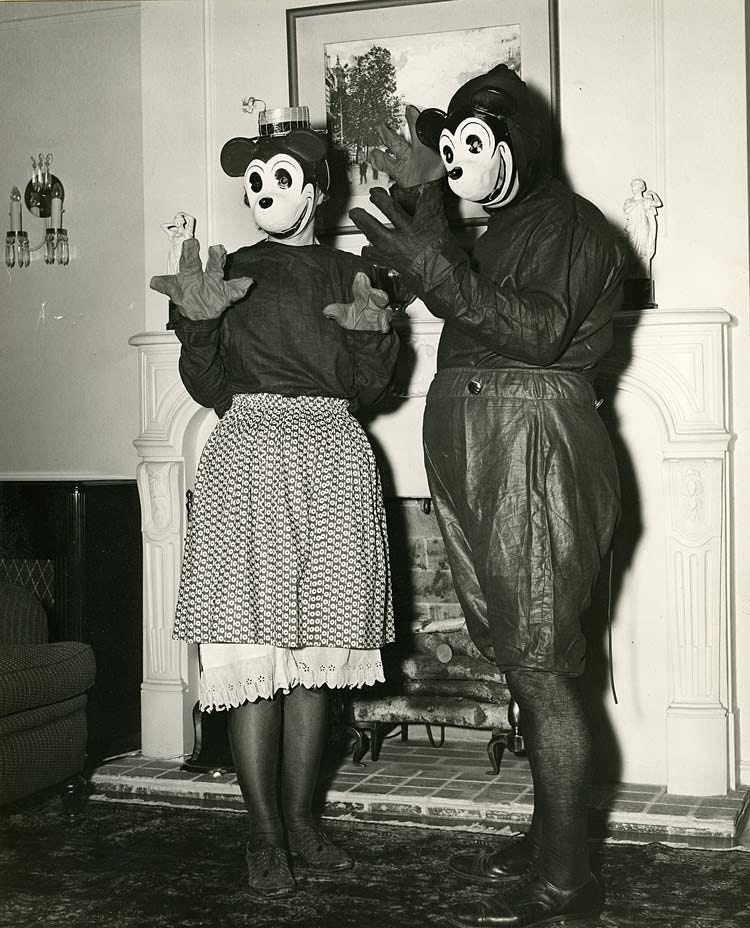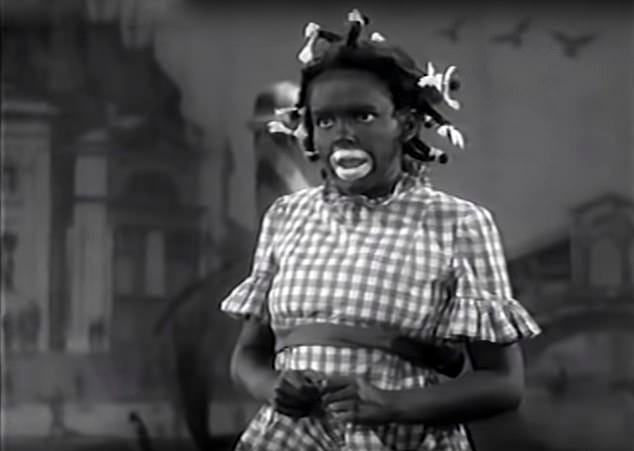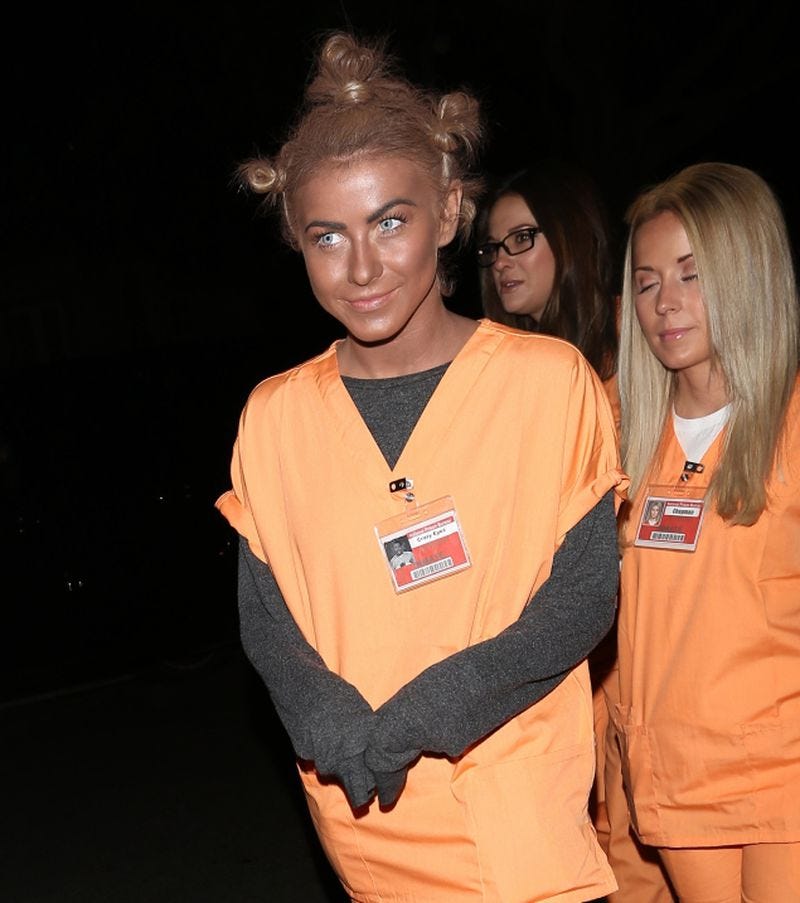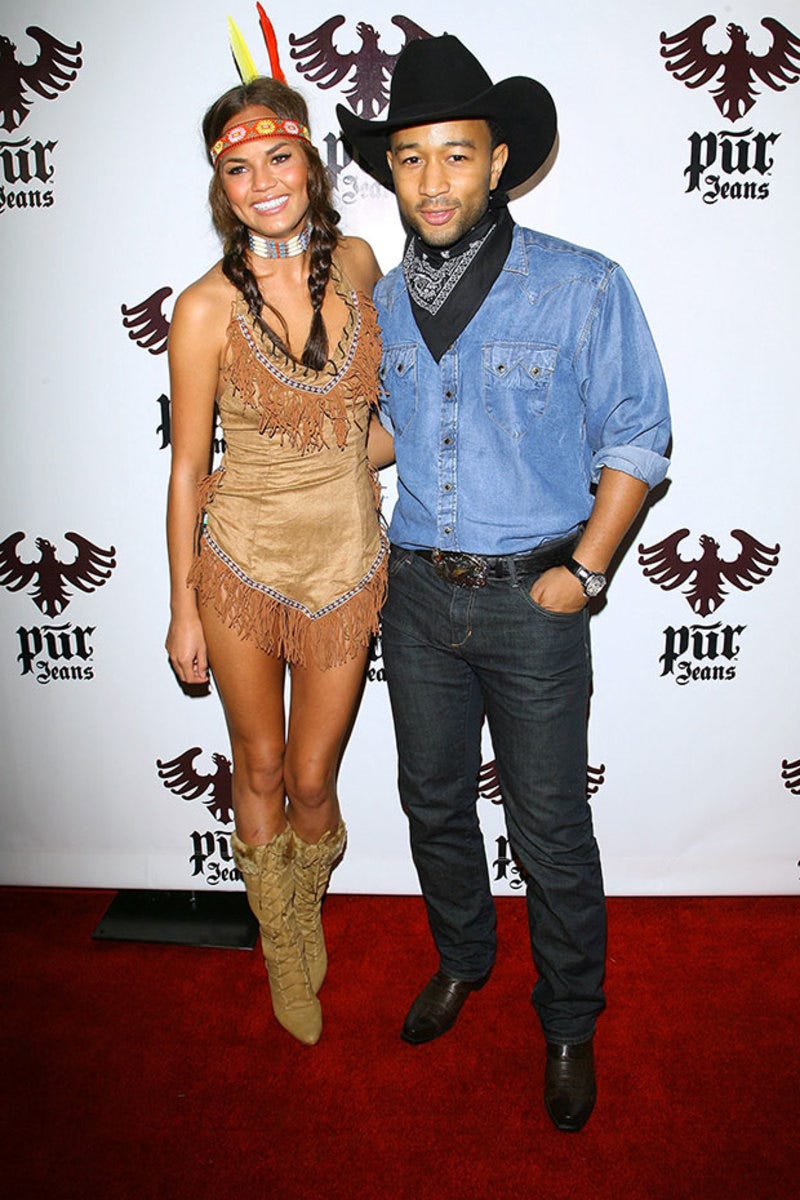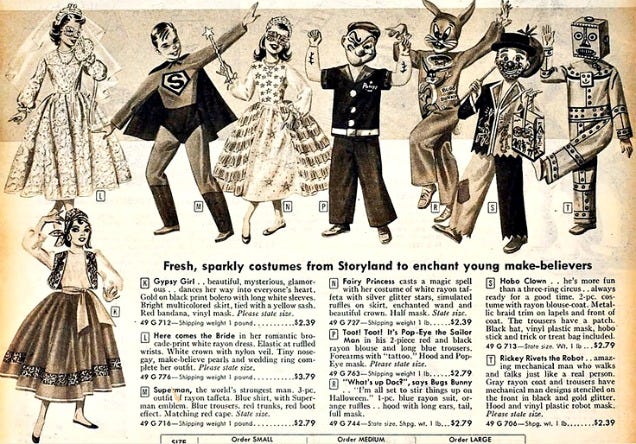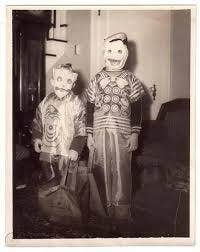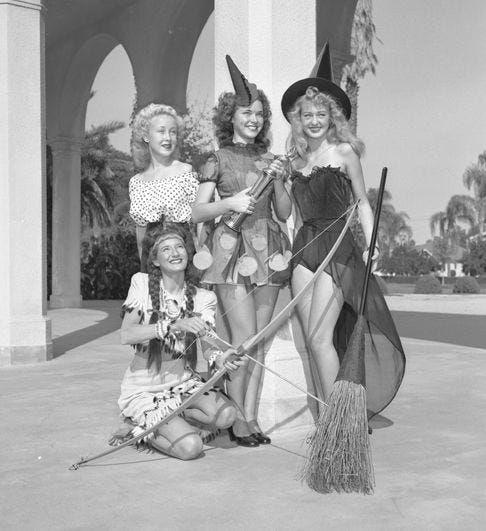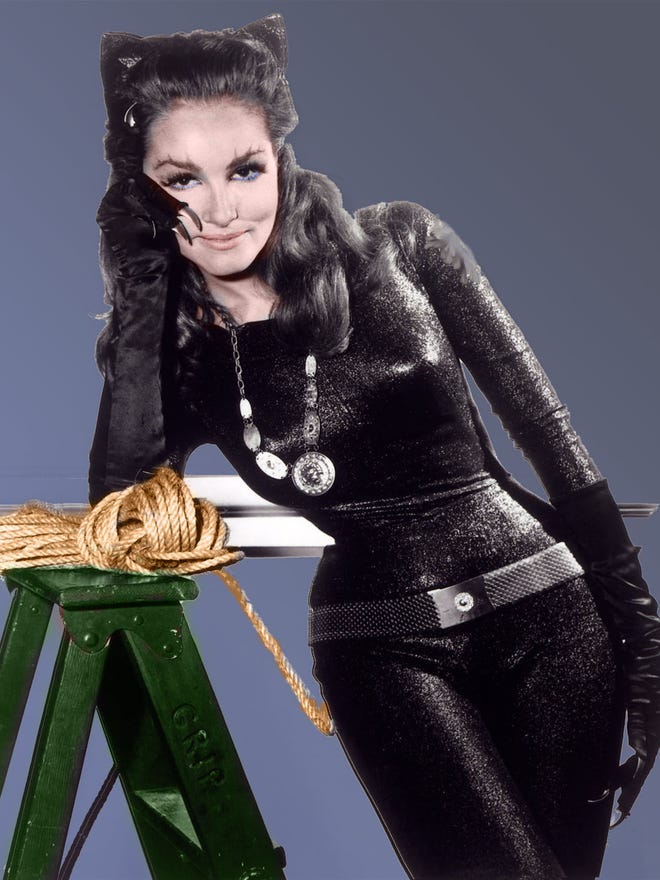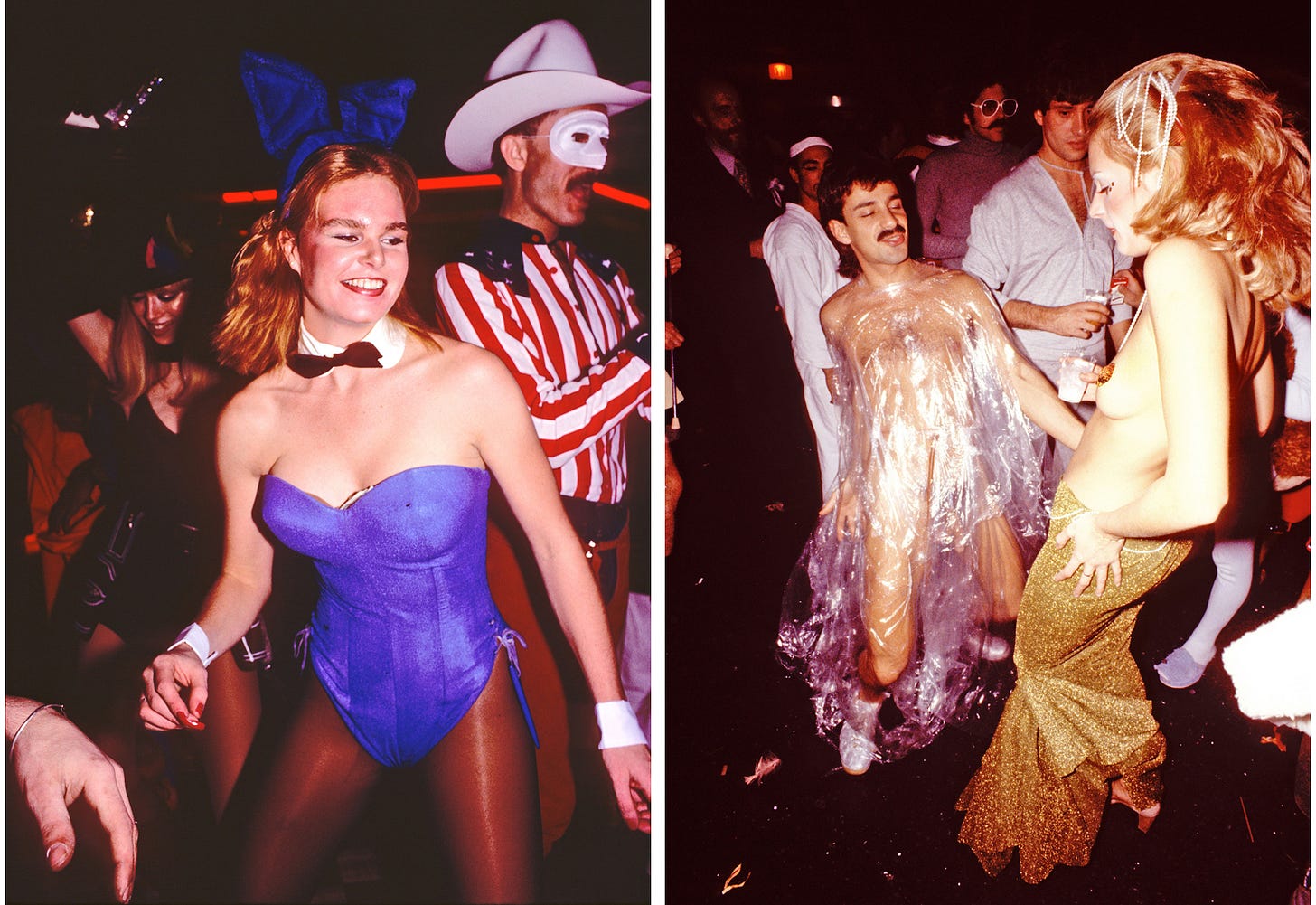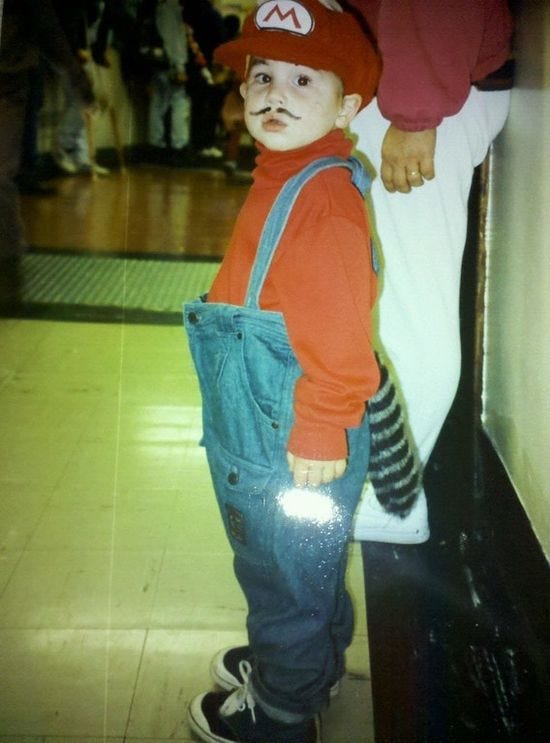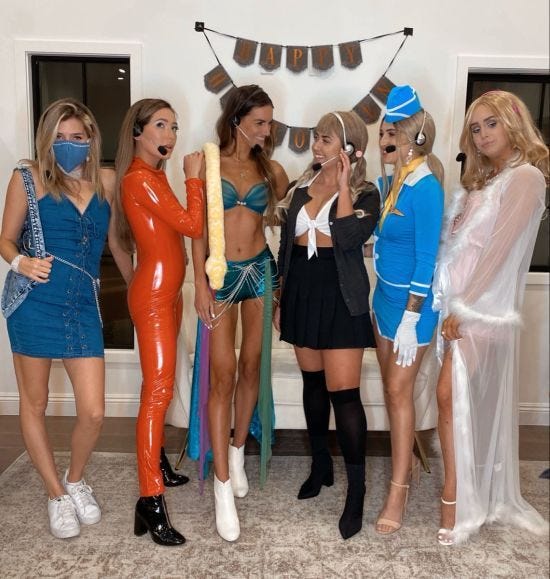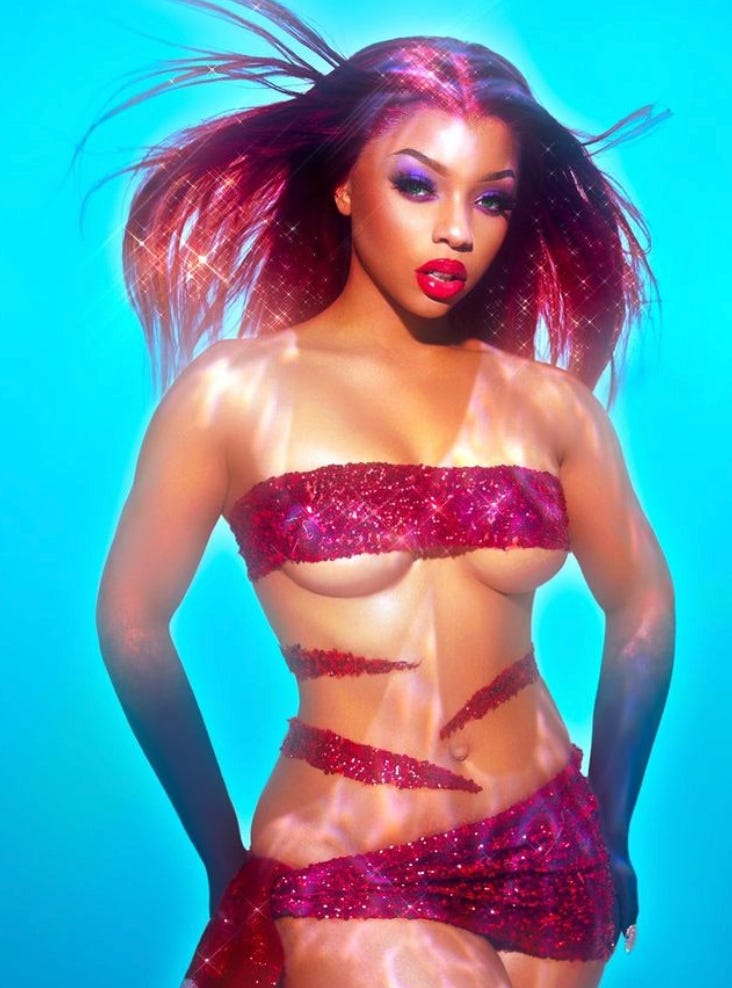If there’s one thing you should know about me, it’s that my ideal year would be summer and Halloween on constant rotation. Physically, I came into this world on July 29, but spiritually it was October 31. I fucking love Halloween. One of the best things about Halloween is obviously the costumes, so it would truly be a disgrace for me not to write this newsletter. You can be hot, you can be scary, you can be hot and scary. The opportunities are endless!!! It’s been a little bitty while since I gave you a history lesson, so I thought chatting about costumes was fitting. Ugh, I can’t wait to have enough friends to throw costume parties. Let’s manifest that for me.
The tradition of celebrating Halloween actually originated from the Celtic festival Samhain. The festival would welcome in the harvest and celebrate the new year on November 1. Celebrants believed that the veil between the physical and spirit world would be broken down the day before the new year. People would put on costumes, typically consisting of animal heads and skins, and start bonfires in order to ward off ghosts.
In the eighth century, Pope Gregory lll named November 1 All Saints Day to celebrate all the saints and those who had passed. This quickly started to incorporate some of the traditions of Samhain, and the day before All Saints Day became known as All Hallows Eve. Celebrated similarly but with a touch of Christianity, people dressed up as saints, angels, and devils.
The Protestants weren’t really down with Hallows Eve celebrations so things took a while to catch on in American, but during the potato famine of the late 19th century, an influx of Irish immigrants helped popularize the holiday nationally.
The Victorian Era Halloween festivities focused a lot more on romance and were celebrated primarily by adults and not children. There were a lot of matchmaking traditions, as well as games and strategies for women to find the men they were going to marry. Bobbing for apples originated during this time, when women would mark an apple and drop it into a tub of water. Men would “bob” for the apples and whichever one they got would tell who their future wife would be. Costumes had yet to really catch on as a Halloween tradition.
Homemade costumes started to appear in the 19th century. Women’s magazines printed instructions on how to make costumes at home using paper, and some of the earliest ideas (ghosts, skeletons, devils, witches) are still very popular today. Paper- mâché masks were very commonly worn with regular clothing as well.
In 1910, the Dennison Manufacturing Company started creating paper costumes in Massachusetts, while Collegeville produced flags and used the scraps to make costumes in Pennsylvania. Its namesake founded the Ben Cooper Company in 1927. Cooper created costumes for the Cotton Club and the Ziegfeld Follies before expanding into costumes in 1937. Licensing rights to popular characters like Minnie Mouse and Snow White were obtained and costumes began being mass-produced.
*trigger warning*
It’s no secret that costumes in America have been problematic in the past and even continue to be problematic today. In the early 20th century, people started to become interested in dressing up as those who weren’t deemed up to par with the rest of society, like gypsies and homeless people.
During this time minstrel shows were becoming increasingly popular and since we love following trends, costumes depicting blackface also became increasingly popular.
Whether it be Blackface, Redface, Brownface, or Yellowface, these kinds of costumes were only seen as amusing to white participants and were demeaning and insulting to the victims being appropriated. This use of ethnicity and culture is rooted in white supremacy and is just a way to show disrespect and make fun of people of color.
Although Blackface isn’t common today (although still done!), Redface is still very common. Dating back to the Boston Tea Party, Redface unfortunately is still a popular reference for Halloween costumes; treating people who are very real as a joke.
During this time, racism was a lot more mainstream and these kinds of costumes were not seen as problematic among white communities, however even now, with an abundance of resources, people are using their ignorance and white supremacy to do the bad thing and half-assly apologize later.
There is far, far more to say about this topic, but we would be here for ages. I’m also sure there are people more qualified who can speak more accurately about these topics than I can, but it couldn’t have been skipped over.
*trigger warning over*
In the 1940s, trick or treating added itself as a Halloween tradition and it’s folk roots were downplayed more and more. Children started to dress up in costumes and go door-to-door begging for candy; something that would otherwise be frowned upon. Many children wore costumes made from old clothing and trick or treating was actually reduced because of post-war sugar rationing.
In the 1950s masks became more popular, especially with faces of pop culture figures, like the Beatles, JFK, Barbie, and G.I. Joe. People had more money and were able to purchase TVs, so Western costumes were increasing in popularity as well. Pin-up girls were starting to be used in a lot of marketing and wartime propaganda so a lot of women’s costumes had a pin-up flare to them. Fishnet stockings, high heels, and heavier makeup started becoming more common.
In the 1960s we got Julie Newmar’s debut as Catwoman, which inspired a lot of women to dress as her character; a popular silhouette to this day. This was also the moment where we start to see a big change in the way people dressed up for Halloween. Masks were used less and people wanted to be seen more.
Pop culture continued to influence costumes throughout the 70s, with Wonder Women being one of the top choices. 1973 also gave us New York’s Halloween parade, created by mask and puppet maker, Ralph Lee. In the 80s, none other than Elvira herself was a main source of costume inspiration. Horror movies from the 70s and 80s also drew in a crowd of people that were still interested in the scary Halloween costume.
These decades started to encourage LGBTQ+ communities to put on outrages and provocative costumes and gave rise to Halloween parties. This was the one night a year they could publicly celebrate their identities. Some cities, like San Francisco, had laws that made it illegal to pose as the opposite sex, which is why the over-the-top, camp, drag costumes were so popular on Halloween. Wearing one of these looks meant you couldn’t be arrested for identity fraud. This one night of the year also allowed those questioning their gender and sexuality to experiment without judgement.
Bars, clubs, and retailers started to recognize the profitability of Halloween during this time.
While costumes were still being mass-produced in the 90s, DIY costumes were starting to gain popularity once again. School girl looks inspired by Clueless and Britney Spears were a go-to.
The 2000s brought the rise of paparazzi and magazines, and people were starting to dress as celebrities more than fictional characters. Think Paris Hilton in a Juicy tracksuit.
Today, Halloween is definitely more capitalism and less Christianity. It’s gone from putting on full disguises and warding off ghosts to putting on full LEWKS and creating a fantasy. Some take a trip to their local Party City and call it a day when it comes to picking a costume, while others take their time to create the perfect vision (me driving 40 minutes to a Target yesterday that had something I needed in-stock). Regardless of which category you fall in, Halloween has always been a reflection of our culture. It allows us to be creative, to experiment, to express who we are, to make a statement.
PLZ let me know, what you’r being for Halloween this year. I just got the finishing piece of my costume and I am SO excited. I may or may not have created a Lightroom preset so my photos look like they came out of the movie my character is in.
Stay safe, stay spooky.
xx

